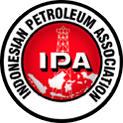Publications
Process Safety Event Investigation With Safeguard Analysis
Proceedings Title : Proc. Indon. Petrol. Assoc., 48th Ann. Conv., 2024
The entities within Pertamina Hulu Energi, particularly those involved in hydrocarbon production, have encountered various process safety events (PSE), ranging from deviations in safe operating limits to more severe instances loss of primary containment (LOPC). It is imperative to investigate these PSEs to glean insights for enhancing overall process safety performance, asset integrity, productivity, and efficiency. Notably, a challenge that has emerged is the high number of PSE Tier 3, which, despite their relatively minor impact, might make the benefits of investigating them appear less worthwhile.
The PSE Investigation using the Safeguard Analysis Method has been developed, drawing from various literature sources (CCPS, 2018a; CCPS, 2019; Energy Institute, 2008; Heuvel et al, 2008) and structured for simplicity to facilitate the team's efficient and effective determination of root causes. As this method is designed with a streamlined approach, its users can extract valuable lessons from PSE Investigations with minimal effort. Furthermore, it is anticipated to address problems comprehensively and prevent their recurrence.
This method is implemented by identifying the relevant Barrier Types associated with the PSE Scenarios, such as External/Internal Corrosion, Overpressure, Overflow, and so on. The scope of Barrier Types identified is limited to prevention barrier types (from Bowtie Analysis), as this method is tailored for PSE Tier 2 and 3 (that keep repeating), thus making the evaluation of mitigation barrier types unnecessary. Each identified barrier must be assessed to determine whether its condition is missing, inadequate, or has failed, which then validates the scenario. Subsequently, the root causes of each barrier condition are analyzed using Safeguard Analysis, applying the concept of a Pre-Defined Tree where the structure has predefined patterns for the root causes.
The implementation of PSE Investigation with Safeguard Analysis, standardized in the form of a Company Procedure, is expected to enhance the quantity and quality of learning derived from PSEs, particularly those categorized under Tier 2 and 3.
Log In as an IPA Member to Download Publication for Free.
